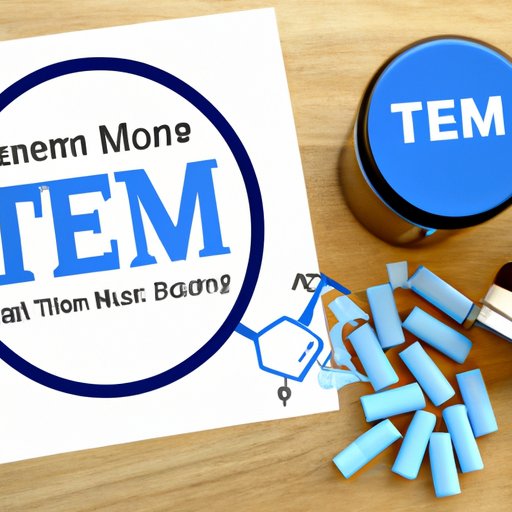Introduction
For transgender individuals, hormone replacement therapy (HRT) can be an important part of their transition. For female-to-male (FTM) individuals, this often includes testosterone therapy. Starting testosterone FTM can be a difficult and overwhelming process, but it can also be incredibly empowering. This article will explore the process of starting testosterone FTM, including research and consultation with a medical professional, understanding the benefits and risks of testosterone therapy, considering your mental health, finding a support system, creating a treatment plan, monitoring progress, and educating yourself on hormone replacement therapy.
Overview of Testosterone Therapy
Testosterone is a hormone that is naturally produced in the body by the testes in males and the ovaries in females. It is responsible for many of the physical and behavioral characteristics associated with masculinity, such as facial and body hair growth, deeper voice, muscle mass, and increased libido. Testosterone is available in a variety of forms, such as oral tablets, patches, gels, and injections. When taken as prescribed by a doctor, testosterone can help to masculinize the body and provide relief from gender dysphoria.

Research and Consult With a Medical Professional
The first step in starting testosterone FTM is to do your research. It’s important to learn about different types of hormones and treatments, as well as potential side effects. Talk to other trans men who have been through the process and ask them questions. You can also read articles, watch videos, and attend workshops or seminars related to HRT.
Once you have done your research, it’s time to consult with a qualified medical professional. Start by identifying a doctor who specializes in HRT for transgender individuals. They should be knowledgeable about the different types of hormones and treatments available and be able to answer any questions you may have. Your doctor should also be familiar with the World Professional Association for Transgender Health (WPATH) Standards of Care, which are guidelines for providing safe and effective care for transgender individuals.

Understand the Benefits and Risks of Testosterone Therapy
When starting testosterone FTM, it’s important to understand both the potential benefits and risks associated with testosterone therapy. The most common physical changes include increased facial and body hair growth, a deepening of the voice, increased muscle mass, and increased libido. These changes can be very empowering for some trans men and can provide relief from gender dysphoria.
It’s also important to be aware of the potential emotional effects of testosterone therapy. While some trans men find that testosterone has a positive effect on their mood and energy levels, others may experience depression, anxiety, or anger. It’s important to talk to your doctor about any emotional changes you may experience during HRT.
Finally, it’s important to be aware of the risks associated with testosterone therapy. Potential risks include acne, high cholesterol, liver problems, and infertility. It’s important to discuss these risks with your doctor before starting testosterone FTM.
Consider Your Mental Health
Before starting testosterone FTM, it’s important to assess your mental readiness for HRT. Many trans men find that testosterone has a positive effect on their mental health, but it’s important to make sure that you are emotionally prepared for the changes that may occur. If needed, seek out professional support from a therapist or counselor who is experienced in working with transgender individuals.
Find a Support System
Starting testosterone FTM can be a difficult and overwhelming process, so it’s important to have a strong support system in place. Reach out to friends and family members who are supportive of your decision and let them know how they can help. It can also be beneficial to join online communities where you can connect with other trans men who are going through the same process.
Create a Treatment Plan
Once you have done your research, consulted with a medical professional, and assessed your mental readiness for HRT, it’s time to create a treatment plan. Discuss your goals with your doctor and develop a plan that is right for you. This may include different types of hormones, dosages, and delivery methods. Make sure to follow your doctor’s instructions and keep track of any changes in your symptoms.
Monitor Your Progress
It’s important to regularly check in with your medical provider to monitor your progress. Keep track of any changes in your symptoms and report any concerns to your doctor. Be sure to take all medications as prescribed and attend regular checkups.
Educate Yourself on Hormone Replacement Therapy
Finally, it’s important to educate yourself on hormone replacement therapy. Learn about the different types of hormones and how they work in the body. Understand the potential benefits and risks of each type of hormone and what to expect during the transition process.
Conclusion
Starting testosterone FTM can be a difficult and overwhelming process, but it can also be incredibly empowering. It’s important to do your research and consult with a qualified medical professional before beginning HRT. Understand the potential benefits and risks associated with testosterone therapy and consider your mental health before making a decision. Find a strong support system and create a treatment plan that is right for you. Monitor your progress and educate yourself on hormone replacement therapy to ensure a safe and successful transition.
(Note: Is this article not meeting your expectations? Do you have knowledge or insights to share? Unlock new opportunities and expand your reach by joining our authors team. Click Registration to join us and share your expertise with our readers.)
